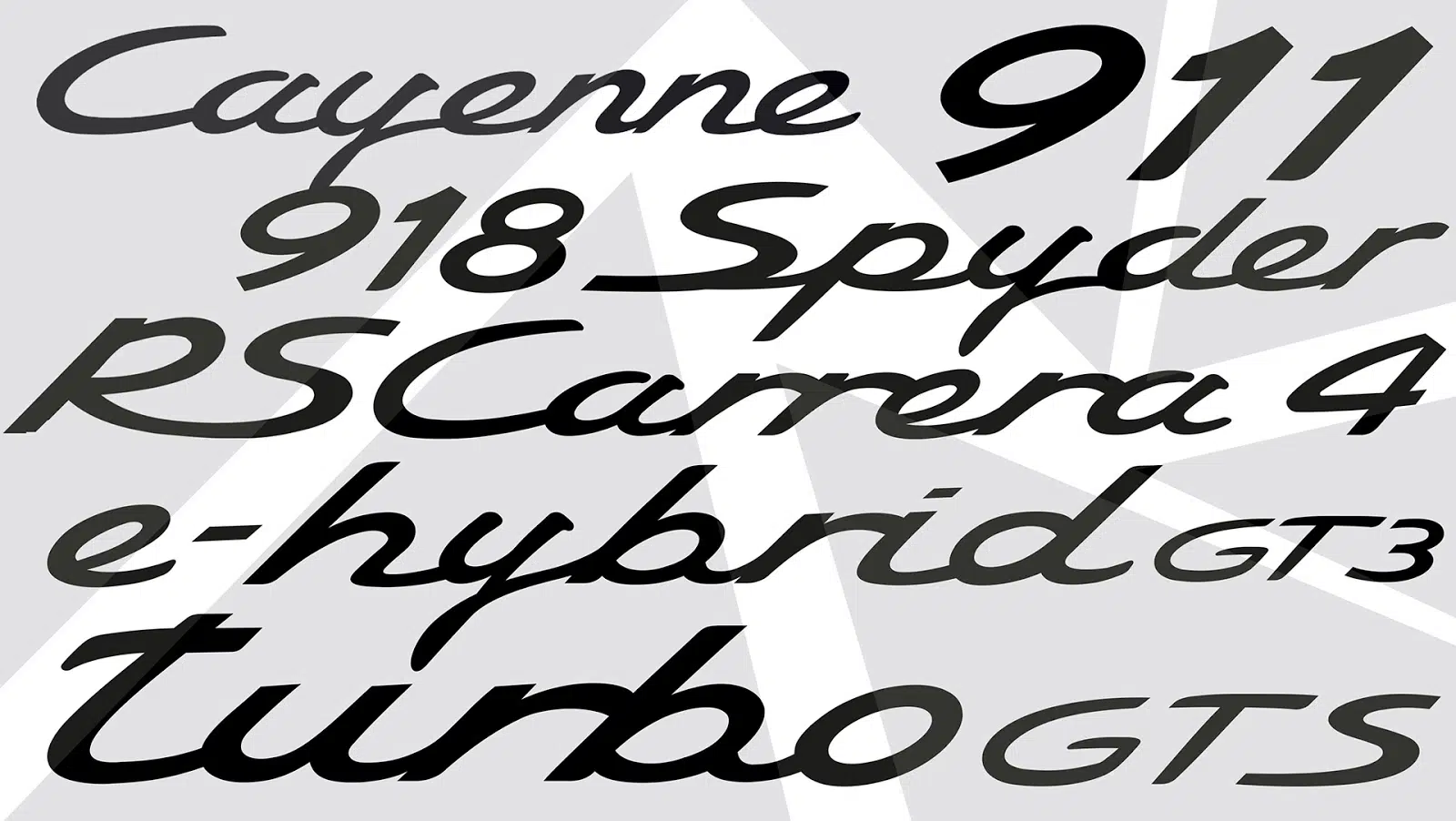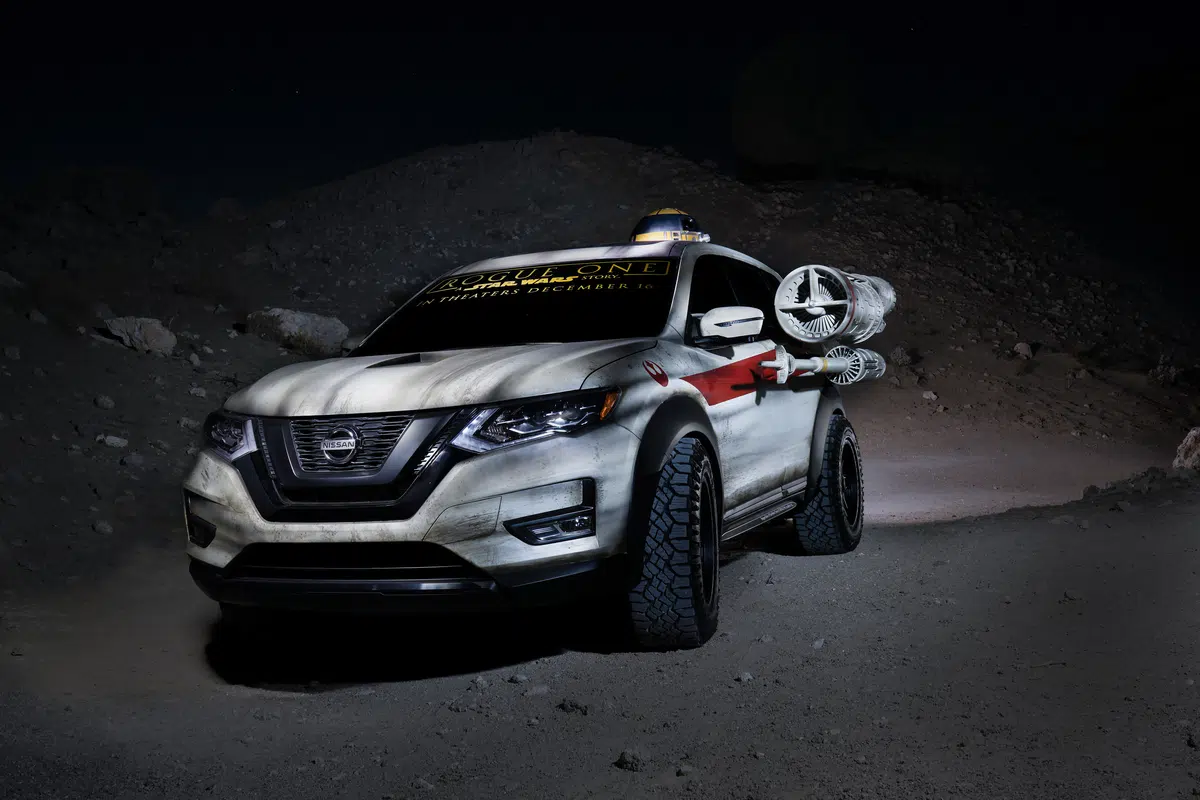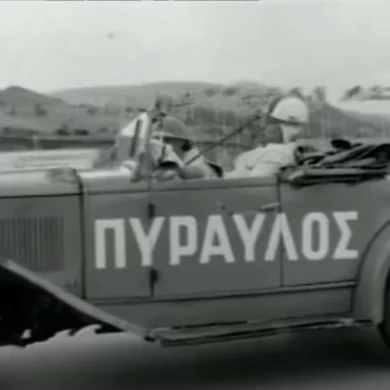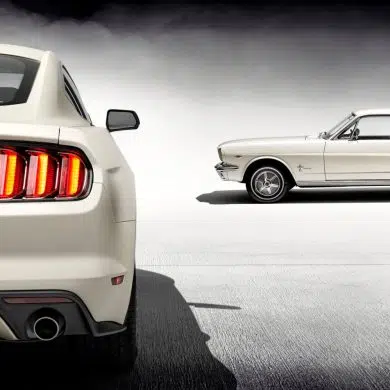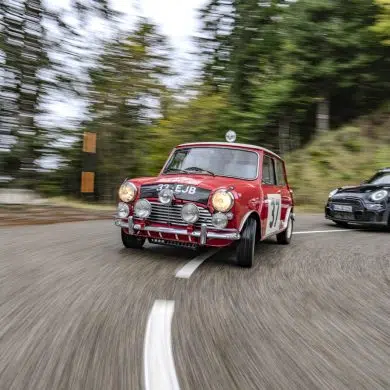Each Porsche model has an official name and an internal type number.
Sometimes these two are the same, sometimes not - and how can one understand this naming system?
Some dreams are difficult to put into words, as their names are very long
A prime example is the Porsche 356 A 1500 GS Carrera, which in 1955 brought smiles of happiness to car enthusiasts around the world. At the time, the top model from Zuffenhausen looked like it had come from a different world.
But also from a technical point of view, this elegant sports car was simply fantastic: "Look, here comes Porsche three hundred and fifty-six A thousand and fifty-six A thousand and fifty-one." and the car had already passed in front of the screens with its top speed of 200 km/h.
Admittedly, the names can sometimes be confusing. Often, however, there is a logical explanation for the model names: the 1955 model, for example, was based on the Porsche 956 and was part of the further developed A-series.
Devoted Porsche fans, however, play with the acronyms and codes of the Porsche models: 356 and 911, 964 and 993, GTS, GT and S, Carrera, Spyder, Speedster. They are, as a whole, part of the Porsche "religion" - and every religion has its own code.
However, many uninitiated car enthusiasts are often confused by Porsche's typology. How can a car be called 911 and 991 at the same time? Is that one a Boxster or a 987? Or is it 981? And on the current models, what does the 4, S or Executive stand for? So here are two practical ways to crack the Porsche code.
One number for each row
To understand how the internal numbers method began to be applied, one has to go back to 1931. Each series, each project of Ferdinand Porsche's then newly founded design and planning office Dr. Ing. h.c. F. Porsche GmbH was given a sequential number, the internal type number. In the beginning it was number 7: a project for a saloon car for the German car manufacturer Wanderer. Number 22 became the legendary Auto Union Grand Prix race car, while Type 60 was the Volkswagen. So the numbers increased with each new series, with each new engine designed, with each design for an axle, gearbox or tractor. On June 8, 1948, when the project numbers had reached 356, something new emerged: for the first time a car was built under the official Porsche brand name. The Porsche 356.
This car marked not only the birth of a legendary brand, but also a legendary model with an unforgettable design. The 356 evolved further with each new model year. The additional letters A, B and C were used for the important steps forward in its development.
901 ή 911;
The Zuffenhausen and Weissach engineers then decided to keep this system. Orders were progressing well - test engines, atmospheric engines, racing cars - and the internal numbers were growing faster and faster. In some of its new sports car models, Porsche reverted the internal factory code to the official model name, as was the case in 1953 with the Porsche 550 Spyder, that inspiring car with the engine in the centre.
However, it was the successor to the 356 that led Porsche to abandon its usual typology. In view of the possibility of a future partnership with the VW factory, the new Porsche would have to be compatible with the numbers used by Volkswagen. As the 900 numbers had not yet been reserved for Wolfsburg, those in charge at Zuffenhausen opted for the number 901 for the six-cylinder version and the number 902 for a later four-cylinder model.
However, an unexpected problem arose: the Peugeot company declared that it had been using three-digit numbers with a zero in between since 1929, and therefore held the legal rights to all such sequences of consecutive numbers in France. Quickly, therefore, the 0 was replaced by 1 - the existing number 1 simply had to be doubled for the vehicle brochures and the type name on the back of the vehicle. Thus, a legend was born that was officially named 911.
In 1964, no one could have guessed that this temporary solution with the number 911 would gain worldwide fame.
Expansion of the model range
The 911, of course, did not remain the only model line of the Porsche company. The 914 was the addition of a smaller and lighter sports car with the engine in the center, and over the years several models were added to the line, including the 924, 928 and 944. They also received their internal number as a model name - using the first version in each case. By this stage, the three-digit number starting with 9 had become universally established as synonymous with reliable sporting character from Zuffenhausen.
Soon, however, the 900 numbers began to run out and competition between them arose. For reasons of tradition, however, engineers continued to use their system. In addition to the various road models, type numbers had to be assigned to the thoroughbred race cars. One example is the legendary 917: after being presented for the first time at the 1969 International Motor Show, this extremely fast model took victory at Le Mans a year later - the first of many racing successes that followed in the first half of the 1970s under the 917 number.
Thus, for the naming of all Porsche models began to need more and more flexibility. The 911 is a prime example of this need: in model year 1968, the series was first given the internal code name "A Series". The 'B Series' followed in 1969, then the 'C Series' in 1970, and in 1973 the thoroughly redesigned 'G Series' was introduced. However, special models of each series also occasionally received their own type number, as was the case with the Type 930, which was called the 911 Turbo, or the Type 954 (911 SC/RS).
1988 saw a significant break in the history of the 911, with the introduction of the completely redesigned 964 series. This was followed by the internal code 933 in 1993. Then came the 996 code, the 997 and, in the current model, we return to the 991 code. Among the 911's internal numbers we find other models, such as the Carrera GT (internal code 980), the Boxster (986 the first generation, 987 the second, 981 the third) and the Cayenne (955). The tradition of three-digit type numbers is maintained - albeit with a certain degree of creative freedom.
In addition to the official names and internal type numbers, Porsche employees give some models their own, individual names: a 356 model, for example, was called "Dame" (=Laidi), while the 917/20 version of the Le Mans racing car is remembered as "Sau" (=Pink Wruna). But this is a completely different story.
In addition to the official model names, there are various suffixes that describe the many different versions of the models. An overview of these is presented below.
Current models
Boxster
An artificial name used since 1993 and derived from the word Boxer (engine) and the word roadster.
Carrera (e.g. 911 Carrera)
Originally, "Carrera" was the name of the four-cam engine of the Type 547 designed by Ernst Fuhrmann.
Porsche then used this suffix for the more powerful versions of its engines, as in the case of the 356 A 1500 GS Carrera or the 911 Carrera RS 2.7.
However, the name Carrera has almost become synonymous with the 911 model series. The name comes from the Carrera Panamericana, an endurance race in Mexico where Porsche scored major successes with the 550 Spyder.
E-Hybrid (e.g. Cayenne S E-Hybrid)
In addition to the internal combustion engine, the E-Hybrid models also have an electric motor, which provides more thrust while reducing CO2 emissions.
Executive (e.g. Panamera 4S Executive)
The Panamera Executive models have a body with a 15 cm longer body length, so that rear-seat passengers benefit the most.
GTS (e.g. Cayman GTS)
GTS stands for Gran Turismo Sport which originally is a type approval for car racing. The 904 Carrera GTS was first given this epithet in 1963. In 1991, the tradition was reborn with the 928 GTS. The GTS suffix is used today for the particularly sporty and luxurious models of a range of Porsche models.
RS (e.g. 911 Carrera RS 2.7, model year 1972)
The RS (stands for RennSport, meaning racing sports model) and is a road model derived from the corresponding racing version. This badge, however, is also used for particularly sporty models, such as the 911 RS America.
RSR (e.g. 911 Carrera RSR 2.8, model year 1973)
The RennSport Rennwagen (RSR) version [literally: racing sports car] is a pure racing version that is not road-legal.
S (e.g. 928 S, model year 1979, Macan S)
S stands for "Super" or "Sport": a version with a more powerful engine. Today, S stands exclusively for "Sport" and, in addition to the sportier engine, the respective versions have more equipment than the standard model.
Spyder (918 Spyder)
This distinctive name comes from the old carriages and means a light, open carriage for two people. Like the term Roadster respectively, Spyder in Porsche is its open sports models with the engine in the center. The 918 already has a legendary predecessor, the 550 Spyder of 1953.
Targa (e.g. 911 Targa 4)
Η 911 Targa είναι μια ανοικτή έκδοση της 911 που χαρακτηρίζεται από το διακριτό της roll-bar και το σταθερό τμήμα της οροφής της. Το όνομα προέρχεται από το θρυλικό αγώνα ασφάλτου της Σικελίας Targa Florio και σημαίνει “πινακίδα”.
Turbo (π.χ. Cayenne Turbo)
Τα μοντέλα αυτά διαθέτουν κινητήρα με υπερσυμπιεστή καυσαερίων, ο οποίος ενισχύει δυναμικά τις επιδόσεις. Όλα τα μοντέλα Porsche διαθέτουν υπερσυμπιεστή καυσαερίων από το 2015 και μετά.
4 (π.χ. 911 Carrera 4)
Μοντέλα με σύστημα τετρακίνησης
Ιστορικά μοντέλα
CS (968 CS, έτος μοντέλου 1992)
Διαθέσιμη στην αγορά από το 1992, η έκδοση Club Sport (CS) της 968 είχε τον ίδιο κινητήρα, αλλά διέθετε πρόσθετες αεροδυναμικές βελτιώσεις για εντονότερα σπορ χαρακτήρα: χωρίς ηλεκτρικά παράθυρα, πίσω καθίσματα και σύστημα κλιματισμού, μπορεί να υστερούσε σε άνεση αλλά ήταν σημαντικά ελαφρύτερη και, κατά συνέπεια, γρηγορότερη από την 968.
GT (π.χ. 924 Carrera GT, έτος μοντέλου 1980)
Αντίστοιχα με το GTS, το επίθεμα Gran Turismo (GT) δηλώνει μια σπορ έκδοση του βασικού μοντέλου. Η διακριτική αυτή ονομασία προέρχεται από τους αγώνες αυτοκινήτου, καθώς υπήρχε η δυνατότητα κατάταξης στην κατηγορία GT. Έχοντας χρησιμοποιήσει τα γράμματα αυτά για πρώτη φορά το 1955 στην 356 A 1500 GS Carrera GT, η Porsche τα χρησιμοποίησε και πάλι το 1989 στην 982 GT.
GT-Cup (π.χ. 911 GT3 Cup, έτος μοντέλου 1998)
Αγωνιστική έκδοση προπαραγωγής χωρίς έγκριση κυκλοφορίας στο δρόμο, που χρησιμοποιείται, για παράδειγμα, στο Porsche Carrera Cup.
L (911 L, έτος μοντέλου 1967)
L σημαίνει “Luxury”, δηλαδή πολυτέλεια: η τρίτη έκδοση της αρχικής 911 πήρε αυτό το επίθεμα το 1967.
SC (π.χ. 356 C 1600 SC, έτος μοντέλου 1963)
Η 356 SC (Super C) των 95 ίππν παρουσιάστηκε στο έτος μοντέλου 1964 για να σηματοδοτήσει το τέλος της σειράς. Με παρόμοιο τρόπο, η 911 SC (Super Carrera) παρουσιάστηκε το 1977 και αρχικά προοριζόταν να αποτελέσει και αυτή το τελευταίο μοντέλο 911. Ωστόσο, η σειρά τελικά συνεχίστηκε με την 911 Carrera 3.2.
Speedster (π.χ. 356 Speedster, έτος μοντέλου 1954)
Στα μοντέλα Speedster το παρμπρίζ ήταν σημαντικά χαμηλότερο σε σύγκριση με το βασικό μοντέλο, πράγμα που προσέδιδε στο αυτοκίνητο μια πιο αεροδυναμική σιλουέτα. Το αντίτιμο ήταν ότι ο οδηγός έπρεπε να θυσιάσει ένα μέρος της άνεσης στον προσφερόμενο εξοπλισμό.
T (911 T)
Αν και ήδη υπήρχε η έκδοση Targa, το T στην 911 Τ του 1967 σήμαινε “Touring”, δηλαδή μια λιγότερο ακριβή εισαγωγική έκδοση του κλασικού μοντέλου, με μικρότερο κινητήρα.


